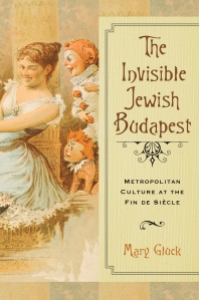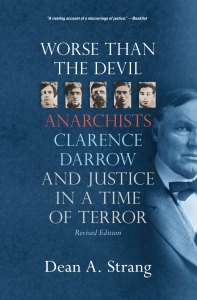Today we present an interview with scholar and author Evadne Kelly, whose book Dancing Spirit, Love, and War is part of our Studies in Dance History series. In this piece she talks about what this book is about, how she acknowledges her role in researching this topic, and why this book needs to exist.
Why was there a need for this book?
Dance is often romanticized, tokenized, and overlooked as a source of knowledge.
I hope to show how the study of dance and movement can reveal a great deal about the world. Dance sheds light on how power operates and governs moving bodies while simultaneously emerging from the movements of bodies. Because of the ways in which bodies connect in time and space through movement, dance is a particularly important source of knowledge in the context of histories and legacies of British colonialism in Fiji and Canada.
In particular, the Fijian song-dance performance tradition, called meke, provides a uniquely embodied perspective on the postcolonial tensions embedded within relations between Indigenous and Western notions of reciprocity, responsiveness, and return. In this regard, meke reveals a great deal about shifts in power over time and space.
Why was it important to acknowledge your own implication in British colonial histories and legacies?
There is no legitimating or securing way forward that does not include messy and uneasy rhythms. But, as Nancy Peters wrote in “Learning Shame: Colonial Narratives as a Tool for Decolonization,” stories that unsettle colonial thinking are “animating” projects (In Visioning a Mi’kmaw Humanities: Indigenizing the Academy, edited by Marie Battiste 2017). Being uncomfortable and disoriented is a key part of the process for non-Indigenous people to move from being enemy to adversary to ally. This became clear over a long process of coming to terms with the ways in which I, as a white Canadian settler and granddaughter of a British colonial Fiji Civil Servant, am implicated in the history and legacy of colonization.
The process of researching and writing this book had the potential to build relations or create obstacles to relations. It all depended on how I listened and payed attention. It also depended on how I remembered the past, including all the stories my ancestors told about themselves. The project taught me to remember differently—to not romanticize the stories of the past but remember them from a new angle of the kinesthetic body, whereby visceral sensibilities, movements, rhythms, and sounds emerge in-between bodies implicated in uneven relations of power. As Nancy Peters explained, learners understand new viewpoints and become skeptical about single truths when they experience a collision of viewpoints (Peters 2017).
It took the research and writing of this book for me to finally understand and be ready to implicate my own body and the bodies of my ancestors in the stories and legacies of colonialism. I expose my own implication in colonialism in the hopes of creating dialogue about decolonizing processes and working towards an ethical space for engagement with communities impacted by British colonialism.
Why is the body and its movements important to ethical engagement?
The body and its movements are a site for governance and control as well as resistance to that control. A close look at the archives of the Colonial Secretaries Office, which was responsible for the administration of British colonial Fiji, shows that the British colonial administration sought to control the movements, behaviors, sensibilities, and comportment of Fijians as a way of eliminating difference and absorbing Fijians into the British Christian, colonial worldview.
I was also aware of the colonial history of extraction, ownership, and objectification of culture. Wanting to follow a decolonizing approach, I aimed for a visceral and relational engagement, involving cross-sensory perception, direct and indirect speech, non-verbal sounds, rhythms, and kinesthetic experiences, that co-constituted dialogue while acknowledging historical and contemporary inequities. Relations of dialogue and kinesthetic and performative exchange were spaces of encounter where uneven power was negotiated.
Why spirit, love, and war?
Spirit, love, and war are all notions that have been romanticized in writing about dance and performance. But they are also expressions that generate indeterminate relations of power between bodies. They disrupt and distribute normative values and are expressions by which power locally and translocally governs and organizes bodies. Christian colonial and postcolonial restructuring of meke occurred through expression of spirit, love, and war. But expressions of spirit, love, and war have to do with negotiating boundaries of inclusion and exclusion within new categories of citizenship in Fiji and in diaspora.
Why did you feel it was important to discuss meke as a translocal performance practice?
My choice to focus on performances of meke in multiple sites helped me to gain a clearer sense of how and why Fijians were performing meke in differing ways and in resonance with local and national politics in Fiji and Fiji’s diaspora. In addition, the long-term and long-distance connections fostered by meke spanned over a crucial period of change in Fiji and enabled me to see the effects of these changes translocally—across time and space.
But the translocal aspects of meke also brought attention to the privileges and barriers to global movements and migrations, including my own, and who gets to move, where, when, and how. In addition, this book has always been implicated within a postcolonial story about local and translocal responsiveness and transmission between bodies. The whole project is a reminder of the complexities of global, postcolonial networks of identification and exchange.
Evadne Kelly is an independent artist-scholar. Her research focuses on the political and social dimensions of dance traditions and her publications appear in Pacific Arts Journal, The Dance Current, Performance Matters, and Fiji Times.












 Dance as an academic field of study has deep roots at the University of Wisconsin, where Margaret H’Doubler
Dance as an academic field of study has deep roots at the University of Wisconsin, where Margaret H’Doubler 





 May 11
May 11 May 11
May 11 May 25
May 25 Available now
Available now